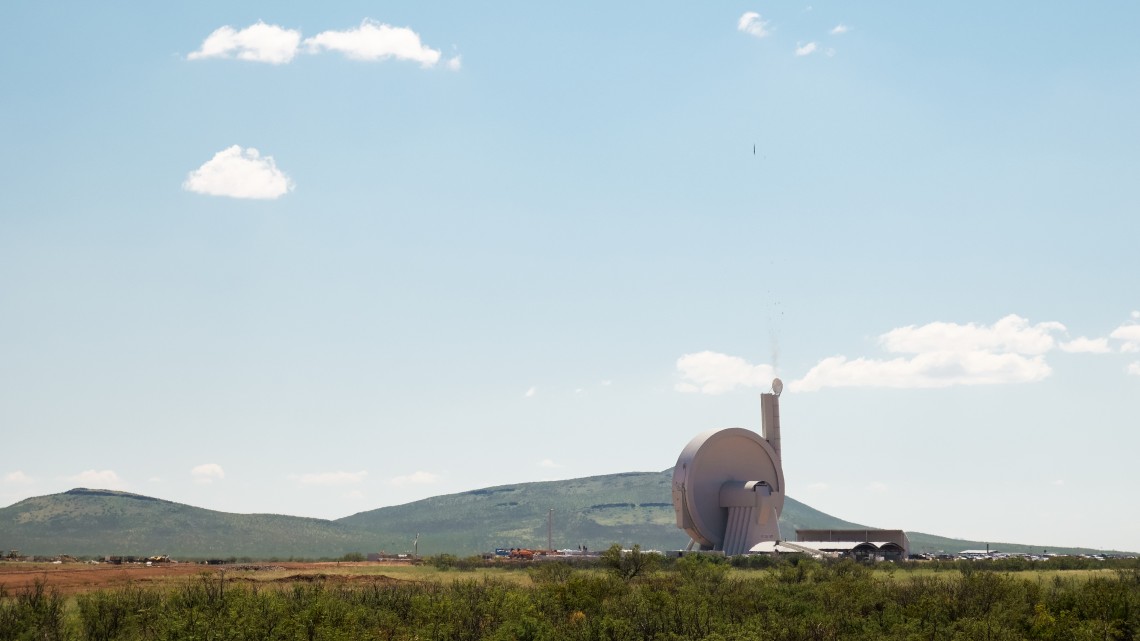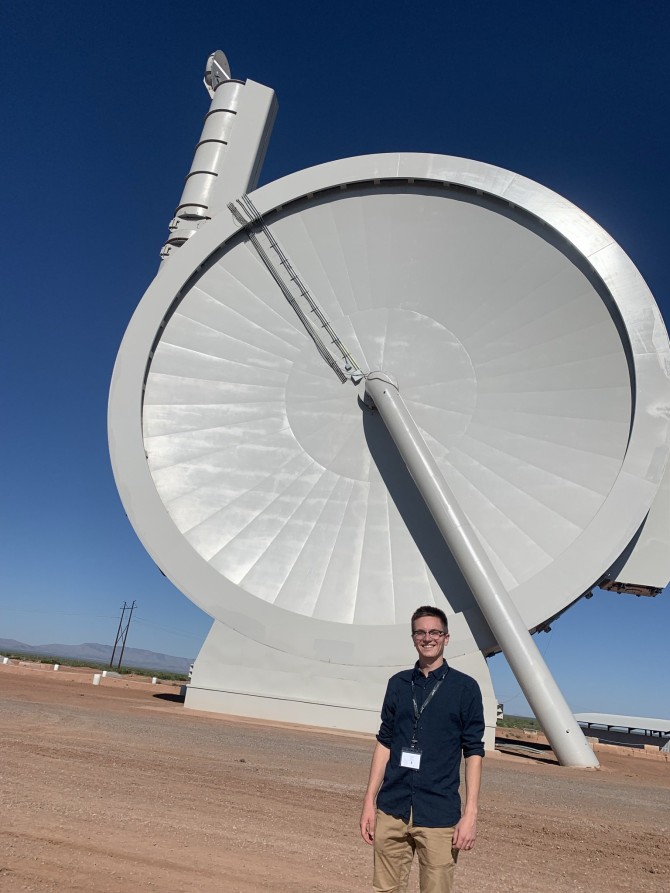
A flight test vehicle is launched out of SpinLaunch's Suborbital Accelerator.
No rockets needed: A massive launch for tiny spacecraft
By Eric Laine
Hunter Adams, a lecturer in Cornell’s School of Electrical and Computer Engineering, gets chills of excitement whenever he talks about his recent trip to New Mexico. His work is primarily focused on computer chip-sized satellites – “ChipSats” – and he thinks he may have found a way to get them to space without the need for any rockets.
Adams was a participant at the Flight Test 10 of the Suborbital Accelerator developed by the space tech company SpinLaunch. The 33-meter tall structure located at Spaceport America is designed to explore the possibility of literally slinging payloads into space using a hypersonic tether spinning at nearly 5,000 miles-per-hour.
A former classmate who now works at SpinLaunch had remembered Adams’s work, which is how he came to be invited to attend the event and to include ChipSats among the payloads launched high into the air. They were not thrown into orbit – yet.
“You might call it an ‘experimental experiment,’” Adams said. “It’s an experiment to determine what future experiments will be possible with ChipSats in the Suborbital Accelerator. Our test confirmed that they indeed can survive spin-up, launch, deployment and landing.”
The ChipSats are tiny, lightweight and packed with sensors designed to be deployed across large areas. These centimeter-scale spacecraft will be a critical tool in future planetary science missions, Adams explained. Deployed from orbit, chipsats would descend through the atmosphere to the surface of planets, gathering spatially distributed datasets as they fall and communicating data from the surface once they land.
ChipSat technology is fundamentally different from conventional spacecraft technology, because these low-cost data collectors are designed to work together. As a collective, chipsats generate datasets with the spatial breadth that is typically associated with remote sensing, like an orbiting probe, but with the tangible immediacy typically associated with rovers.
The challenge is getting the ChipSats into space – a costly endeavor that has required researchers in Cornell’s Space Systems Design Studio to vie for precious cargo space aboard NASA and SpaceX rockets. The Suborbital Accelerator is designed to be a low-cost, more sustainable alternative to rockets.
For Adams, the successful test points to exciting opportunities to expand research and exploration with ChipSats, as well as a potential new platform for engaging and impactful projects for Masters of Engineering students.
“Now we can start deploying lots of chipsats at incredibly high altitudes and studying how they flip and turn on the way down, trying to get a sense of that chaotic motion,” Adams said. “How could we add some determinism to those trajectories? Are there clever mechanical ways that we could make the paths more predictable or perhaps even control them? If you introduce a spin could you give a ChipSat a preferred direction of flight?”
Adams, who was a recipient of Cornell Engineering’s 2022 Canaan Family Award for Excellence in Academic Advising, noted that the fundamental physics behind the processes used by SpinLaunch are not complicated, making it a great starting point for students to explore the capabilities and limitations of chipsats.
“There's some complicated engineering challenges to solve here, obviously,” Adams said, “but the fundamental physics underlying how this works is just rotational dynamics, a topic that engineering students are introduced to during freshman year.”
Media Contact
Get Cornell news delivered right to your inbox.
Subscribe

